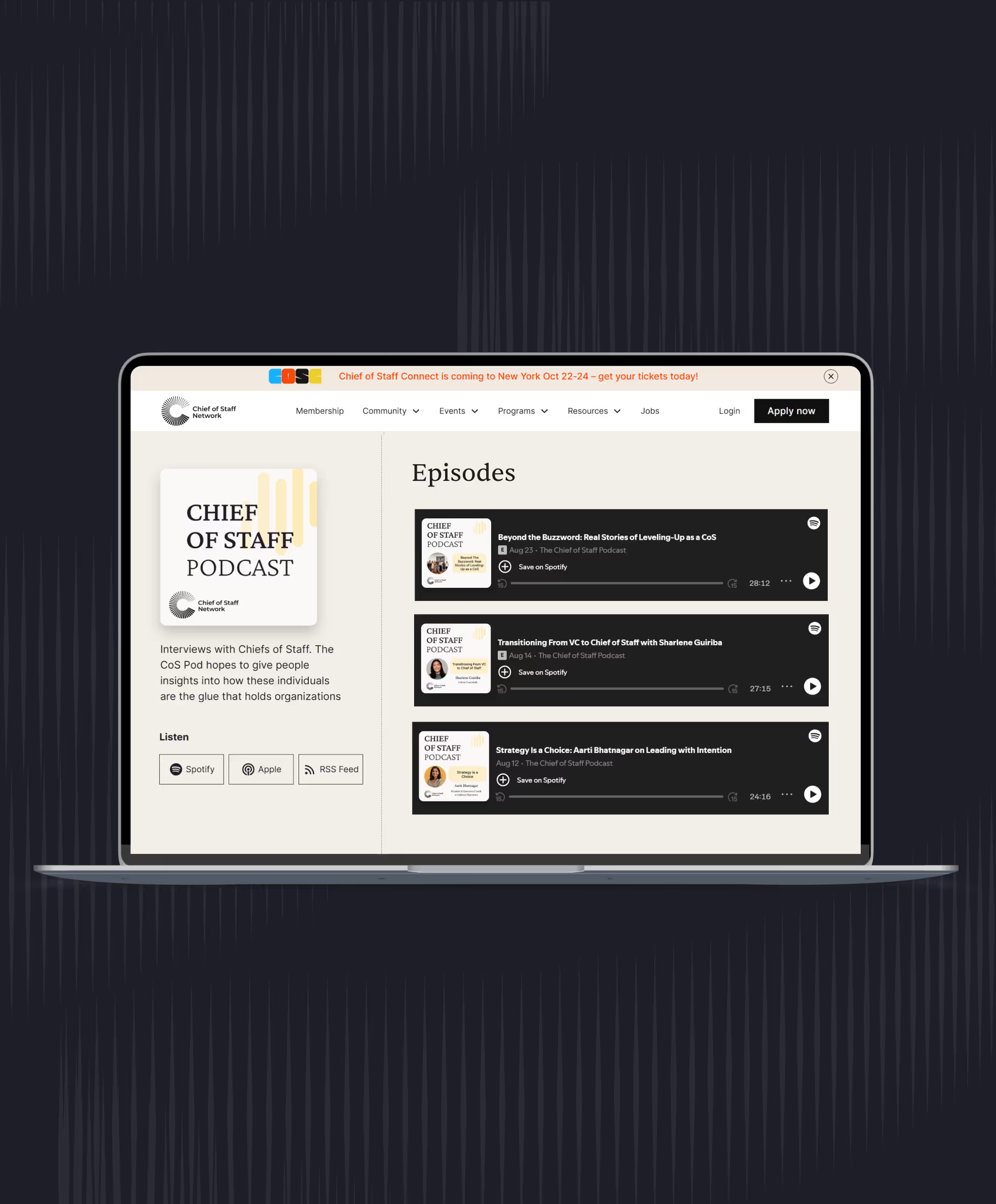One of the most common questions we get from new chiefs of staff is: What do I make my job description (JD) my own? It’s a tricky question, because the role of a chief of staff is so dynamic and context-dependent (especially regarding industry and company stage) that it’s hard to pin down a standard set of responsibilities.
Often, the Chief of Staff JD you applied for will have a 30 day half-life, which means your role will be constantly changing and you’ll rapidly take on challenges that your principal and leadership team couldn’t have dreamed of when they hired you. With that said, crafting your own JD offers a great opportunity to communicate to your principal and your broader firm what work you’re interested in, where you see the company going, how your superpowers will support that direction, and how you work best.
In other words, it’s a chance to align your vision, values, and expectations with your principal and set yourself up for success. This is distinct from a 90-day onboarding plan, which we’ll discuss in a future post. Your JD is partly a user manual for your principal and partly an artifact that explains to the company what to rely on you for.
One framework that can help you think about your responsibilities as a CoS comes from Paul Cohen, who formerly held the role at One Medical. He suggests that a Chief of Staff has three essential responsibilities: process, people, and portfolio.
Process
It refers to assessing, redesigning, and managing key corporate processes that enable the organization to run smoothly and efficiently. In a JD, you may find examples of process work such as:
- Responsible for coordinating annual planning and managing quarterly OKRs
- Helping the CEO prepare for and execute board meetings
- Developing a template and soliciting input for weekly All Hands meetings
People
It refers to gauging the pulse of internal teams, addressing issues affecting morale, culture, and productivity. You serve as a coach and mentor for junior employees, a trusted advisor for senior leaders, and a liaison for external partners. This bucket could include:
- Run companywide culture surveys and scope projects based on responses
- Support onboarding / offboarding of employees
- Research compensation bands for all functions and levels
Portfolio
It refers to owning or supporting specific projects or initiatives that advance the strategic goals of the organization. Examples of portfolio work include:
- Oversee product line expansion
- Own refinement of go-to-market motion
- Become point person for external partnerships
- Lead user and market research studies
Taking up some responsibilities across all 3 buckets will be expected of you, but you should think through where you offer the most leverage and whether that experience advances your long term career aspirations. This goes back to what the company needs, what your superpowers are, and how you like to work.
As I mentioned at the beginning of this article, your JD will become outdated overnight, but I suggest you revisit it every half year with your principal. Why a half-year? That’s a sufficient amount of time that you’ve gone beyond initial firefighting on a project and actually built process and muscle to get it to steady state. In any case, these check-ins are an opportunity to assess whether you’ve delivered on the initiatives you scoped, allocated sufficient time to your superpowers, and scope your next 6-months.
Writing your own job description for a CoS role is not an easy task, but it’s a worthwhile one. It can help you clarify your role, communicate your value, and align your vision with your principal and the organization. It can also help you plan your career path and identify your areas of growth and development.
Remember, your job description is not set in stone. It’s a living document that should evolve with you and your role. By following the tips and framework in this article, you can create a job description that reflects your current reality and aspirations.
Additional JD examples can be found here, here, and here.
If you want career coaching, you can apply for CoS Network membership here.





.avif)
.avif)








